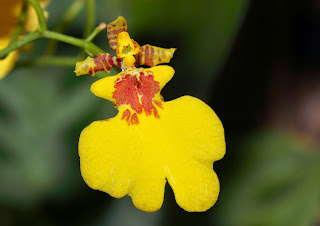Due to their association with spring and new life, tulips make wonderful get well flowers. Send a bouquet with pink tulips to symbolize your affection and caring or send yellow tulips to bring cheerfulness to those recovering from illness. Orange tulips mean energy, enthusiasm, desire, and passion. Orange tulips can be a great pick-me-up and source of inspiration for those who ill.
In addition, tulips are second only to roses for love and romance. Send a bouquet featuring roses when you want to send something memorable and unique to your Valentine. Try a bouquet of pink tulips or red tulips to express your affection and love. Other good choices for Valentine's Day flowers include red and pink lilies and purple aster flowers.
White tulips, peach tulips, green tulips and purple tulips have become popular choices for sympathy flowers. A bouquet with white tulips symbolizes the eternal rest of the departed. A white casket spray of tulips is both beautiful and elegant, especially when combined with white roses, carnations or lilies. A bouquet with peach tulips conveys both affection and sympathy. An arrangement including green tulips expresses the assurance of the resurrection. A wreath with purple tulips to express heartfelt sympathy.
Tulips also have a surprisingly long history of use as wedding flowers-for table centerpieces, general wedding decor and as bridal bouquets. Cut tulips can wilt, so the stems should be relatively short and the flowers kept in water as long as possible. Tulips are an elegant and classical choice for weddings, particularly a spring wedding. Tulips with variegated colors and ruffled tulips can create a striking, modern look for a wedding centerpiece. Potted tulips or tulip bulbs can be given as wedding favors, especially red tulips symbolizing the love of the newly wedded couple. Pink tulips are also a wonderful choice for wedding flowers.
As symbols of new life, tulips are a great choice for a baby shower or as a gift for a new baby. Pink tulips (for girls) and yellow tulips (for boys) are probably the best bets. If the gender of the baby is unknown, white tulips symbolizing heaven, newness and purity would be a great choice or orange tulips meaning energy and enthusiasm. The same symbolism makes tulips perfect birthday gifts for those with spring birthdays.
The beauty and simplicity of a bouquet including tulips (see below) , especialy orange tulips, makes a strong statement for congratulating others on significant accomplishments. In addition, the achieving of a major accomplishment often sets the stage for the next step or level-a sign of growth and new opportunities that perfectly match the flower that heralds the new cycle of spring each year. Tulips are wonderful graduation gifts as well since these celebrations usually take place in the spring or early summer.




























